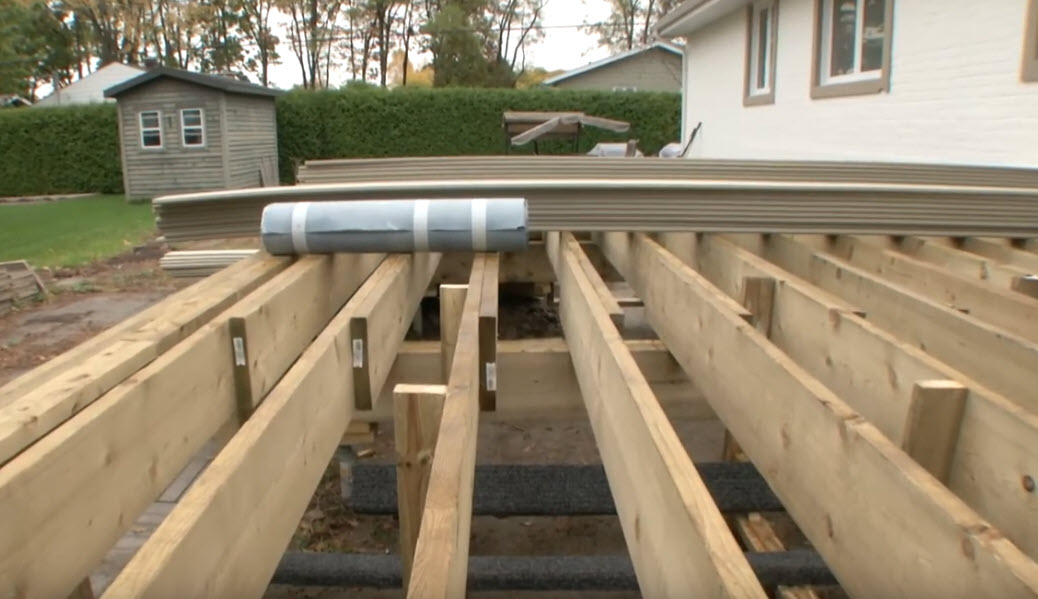Advice From a Pro
Nowadays, everything goes fast. The pace of life is hectic and between work, family and social life, we sometimes have the impression that time flies without being able to take advantage of it. That’s why it’s more than ever important to take time or moments to recharge your batteries. And one of the ways to do it, is to take a pro’s advice to build a sustainable terrace to have peace of mind and tell yourself that it’s done for a very long time.
Alain Boulianne, from Patio Boulianne & Fils, chat with Dekavie to give his point of view on what makes a deck sustainable.

Deck Structure
Dekavie : Alain, what kinf of advice you give to a customer who wish to build a sustainable deck?
A. B. : Overall, I recommend to bet on three things:
- What will support deck structure
- The choice of materials for the structure
- Coating material for deck finishing
D. : Precisely, in terms of structure, what makes it strong?
A.B. : When you start, you have to choose the base of the structure because this is what supports everything. The best option for having 100% stability is screw piles.
D. : The type of soil, whether clayey or rocky, doesn’t influence the strenght or number of piles?
A. B. : No, because the number of piles depends on the span between each of them and, this is what must be observed. The pile, in the lower part of its stem, has a saucer that sinks into the ground and this is what keeps it from moving up or down during freeze and thaw.
And if the ground is ever loamy, the pile might move ½” but, with an adjustable head, the height can be easily readjusted. It gives latitude. And a flat head on the pile is preferable to come drop off a solid 4×4 plank.

D : Which wood you suggest for deck structure?
A. B. : The best choice is treated wood. You can go with red pine or spruce but, treated wood is good enough. And with the Resisto-type waterproof membrane, the wood will not rot.
For joists size, I always use 2×8 because they offer better stability and, since we put them at 12″, it makes a great straight floor. Whereas with a 2×6 joist, after a few years it can curve a litte bit. With a 2×8, it’s really solid, like we’re driving a Cadillac.
D. : For screws, which are better to use?
A.B. : Ideally, stainless steel screws. As the board expands, which is quite normal, a stainless steel screw will not break or rust.
D : Why it’s important to ventilate under the terrace?
A.B. : If we’re making a terrace at ground level, I recommend making it at a minimum height of 15” from the ground. In fact, it gives the wooden structure a chance to breathe and it helps save, in my opinion, a third of its life.
D : So, if a person completely closes the underside of its deck, is will create humidity?
A. B. : Exactly. I always tell my clients: If you close the underside or ask me to make the patio 10″off the ground, there is going to be too much humidity. Sometimes, I tell them as a joke: go sleep one night under the deck and you’ll see how it is under the structure, you will understand!
In Conclusion
Finally, Dekavie is an ecological material that lasts over time and closes the loop of circular economy: you buy a bottle of laundry detergent, you put it in the recycling bin, it is reduced into pellets and it is recast in planks to make a deck.
As a result, you’ll be proud that you’ve built something solid that you can enjoy without worrying about maintenance. Your children and even your grandchildren will benefit too!
Finally, if durable and quality materials made in Quebec are important to you, Dekavie is the choice that will bring you peace of mind.
 English
English

